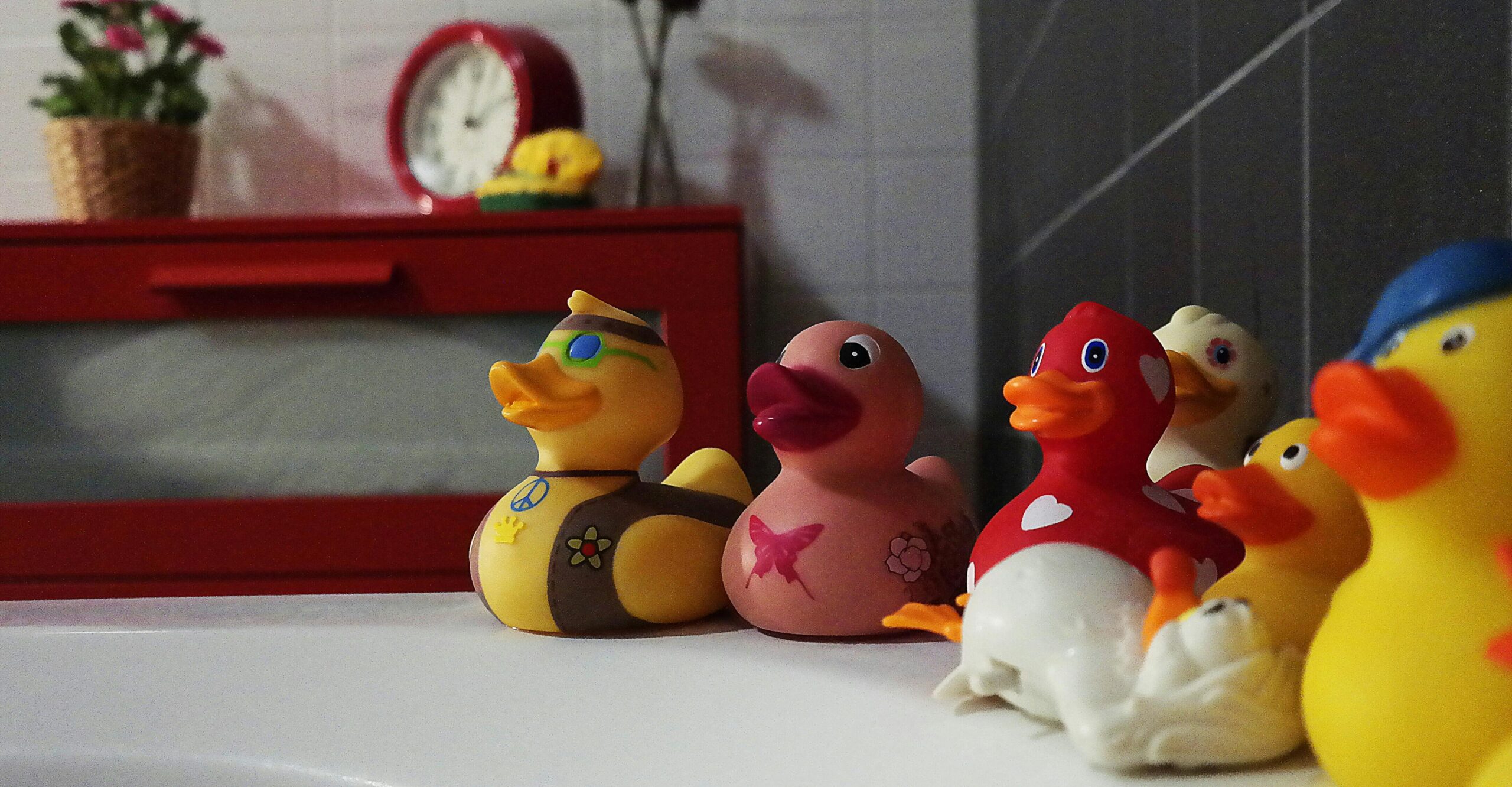By Sherri Gordon, CLC | Published on May 21, 2025 | Medically reviewed by Candice W. Jones, MD FAAP
If you’re like most parents, you might have your fair share of concerns about the bath toys your little one shoves into their mouth during bathtime. Maybe you have even seen the telltale signs of dirt and grime—and possibly even mold—when they squirt the toys at the wall of the tub.
Fortunately, there are safe and effective ways to not only clean your child’s toys, but extend their life and prevent mold. Below, cleaning experts and pediatricians explain the best ways to clean bath toys as well as offer tips for keeping them fresh for as long as possible.
Make a Bleach Solution
If you suspect your child’s bath toys have mold inside them, and you want to try to salvage them, the most effective cleaning option is using a diluted bleach solution. Just keep in mind that bleach is harsh and can damage toys.
“Bleach solution is effective because it kills bacteria and mold,” says Jonathan Jassey, DO, FAAP, a board-certified pediatrician and founder of Concierge Pediatrics.
For basic cleaning of toys, Kristin DiNicolantonio, MA, senior director of stakeholder communications at American Cleaning Institute, suggests making a solution of ¾ cup of chlorine bleach to one gallon of water.
“Scrub the toys using this solution and be sure to wear protective gloves and old clothes to prevent bleach damage on your garments,” says DiNicolantonio. “Make sure your space is well-ventilated.2 For hollow toys or toys designed to fill with water, be sure to squeeze out all liquid. Once the toys have been cleaned, leave them wet for five minutes, then rinse the toys in a clean sink and let them air dry.”
Handwash With Soap and Water
For daily cleaning, you can still sterilize your bath toys with soap and water, says Dr. Jassey. Simply fill a disinfected sink, basin, or container with hot water and a few squirts of dish soap.
Karissa Whitman, a mom of two and motherhood blogger at MomAfterBaby.com says she often uses this method and recommends scrubbing each toy, rinsing it, and letting it air dry. If you submerge the toys in water, you should squeeze out any excess water as well. Also, if you are using extremely hot water, consider wearing gloves to protect your hands from the heat.
Create a Baking Soda Paste
Some people like to make a gritty paste with baking soda and use it like a scrubbing tool, says Dr. Jassey. One way to do that is to mix ½ cup of baking soda with a few tablespoons of water. You may need to adjust the ratio until you have paste that can be spread onto the toys.
Baking soda makes a nice cleaning compound because it is non-toxic. Research also has shown that it is unlikely to trigger asthma or other respiratory issues.4 That said, it can be abrasive, so you should exercise caution when putting it on bath toys. You don’t want to damage the toys or scrub away any protective coating when cleaning them.
Risks of Mold Growing on Bath Toys
Generally, mold and mildew can make kids sick, says Dr. Jassey. “If a toy is moldy and your child is touching it, breathing it in, or getting water squirted into their mouth, it can lead to respiratory problems, rash, allergy issues, gastrointestinal infection, or eye infections.”
However, he says he has never seen a case of this in nearly 20 years of pediatric practice. Still, you may want to exercise caution. Dr. Jassey suggests looking for nonporous toys or machine washable toys because they are easy to clean and less likely to get mold.
“Parents often assume that if a toy looks clean, it is clean,” says Tkachenko. “But mold can easily grow inside squeeze toys where you can’t see it. When in doubt, it’s better to replace the toy than expose your little ones to mold.”
